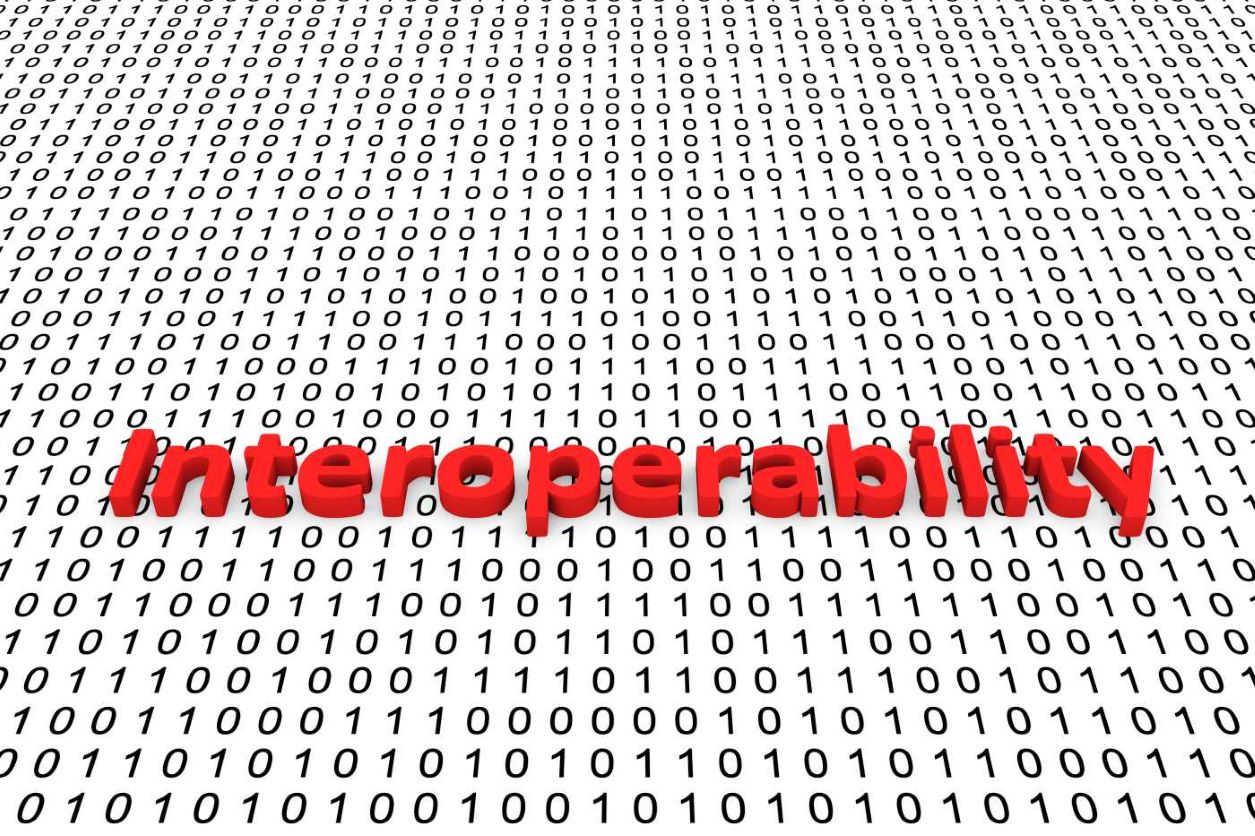Interoperability is the ability for different software applications or systems to communicate with one another by sharing information. We experience interoperability in action nearly every day—we just don’t think about it. Every time you send a text message to someone who uses a different service provider, withdraw money from your digital bank account using an ATM, or are referred to a specialist by a doctor, you are benefiting from interoperability.
Many modern conveniences we take for granted would not be possible without software interoperability. Likewise, interoperable systems are crucial for the success of a business that uses any kind of enterprise software, so solving interoperability issues should be a top priority.
How Does Interoperability Work?
Most interoperable software systems share information by transferring data fields or documents back and forth with another interoperable system. This is basic interoperability, sometimes called syntactic interoperability. However, since software systems often use different formats or programming languages, it can be difficult to avoid information being lost in translation. In order for different systems to be able to exchange information effectively, they need to be able to communicate context as well as data.
True interoperability is achieved when a software system can not only send data to another system or application but also convert it into a format the receiving system can fully understand. This is often called semantic interoperability. Systems that have achieved semantic interoperability can use metadata to create a common structure and vocabulary that can be understood and used by other systems independently of any specific format.
When designing a software interoperability solution, there are a few important factors to consider:
- The scope of the data to be shared.
- The ability of the solution to match software formats effectively.
- The likelihood of the solution failing in a way that interrupts the user’s workflow.
- The likelihood of the solution failing in a way that interrupts the business’s workflow.

APIs
Application programming interfaces (APIs) are a popular type of interoperability solution that are often used to standardize shared data. An API enables interoperability by acting as an access point through which disparate software systems can connect and communicate in a common language.
Why is Interoperability Important?
Interoperability is essential for modern business success. The ability to transfer data between different software systems in a format that each can easily interpret is a huge advantage for a company that depends on enterprise software to function. Interoperable software can improve efficiency and reduce costs by saving time and effort for the user.
Interoperability also provides benefits to a business’s ability to gather actionable insights. When data can be uniformly exchanged with multiple sources and presented in a consistent manner, it becomes much easier to make confident, data-backed business decisions.
Organizations in nearly every industry would struggle to function without interoperable software. Interoperability plays an integral role in numerous fields, such as:
Healthcare: Medical providers are beginning to adopt interoperable software as a means of sharing patients’ medical records between different clinics or specialists. Without interoperability, healthcare providers only have access to the information in their system, and if the information needs to be shared with other providers, a referral must be transcribed manually. This makes it difficult for any single specialist to get a comprehensive picture of your medical records.
Public Safety: For public safety workers such as firefighters, law enforcement, or paramedics to do their jobs effectively, their respective departments need to be able to communicate quickly and reliably. Software interoperability allows for compatible systems that make it possible for different types of emergency services to exchange critical, time-sensitive information.
Sales and Marketing: A sales or marketing tech stack includes many different applications that need to work together seamlessly. Software tools like CRMs are essential to the day-to-day operations of many companies. Interoperability makes it possible to integrate all these applications so that data can flow freely between them.
Telecommunications: Interoperability is a critical principle in the telecommunications industry. It enables our devices to communicate with each other even across different service providers that use different systems. It also facilitates the communication between our devices and the applications we use them to access every day.
Clearly, the benefits of interoperability (and the negative impacts of its absence) affect a wide range of industries. Given its ubiquity, it is crucial that interoperable software functions reliably—when interoperability inefficiencies arise, they can be catastrophic if they are not attended to promptly, or better yet, avoided altogether.
Interoperability Challenges
Most businesses’ interoperability problems are not the result of laziness. While it's true that some developers and IT managers tend to overlook interoperability, the more pressing issue is that software interoperability is still not widely understood. Implementing independent interoperability solutions is difficult for inexperienced developers because without standardized connectivity protocols, each software integration has to be accomplished separately.
Now, the use of APIs makes it easier for software systems to achieve universal interoperability, but it is still a highly technical process. The relatively advanced degree of expertise that is required to troubleshoot interoperability creates a roadblock for businesses that need complex interoperability functions.
Software evolves rapidly, and once a system’s interoperability capabilities become outdated, it can become very expensive to upgrade them. This often results in legacy systems with poor interoperability remaining in use far longer than they should.
KNDCODE, Always Ahead, Forward, Near.
Ebooks
KNDCODE'S eBooks your gateway to knowledge and expertise in software development. Our curated collection of insightful and practical eBooks covers a wide range of topics, helping you enhance your skills and unlock your full potential. Our free eBooks provide valuable insights, best practices, and real-world solutions to empower your career in the ever-changing world of software development.

Hiring Guide (Dev)
Have access to the complete guide to effective Software Development hiring
Read more
Software Development Myths
Here are 8 common software myths and the truth behind each of them.
Read more
Nearshore vs Offshore SD
Nearshore vs Offshore Software Development. What's the difference?
Read more
KNDCODE Credentials
Solutions to the most complex operational challenges.Learn more about our capabilities.
Read more





